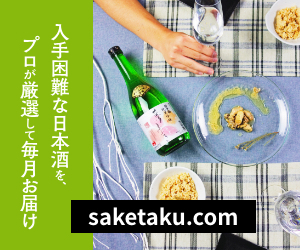- Home
- Drinking at home, Recipes for dishes that go well with sake
- Baseball lovers must know “Junmai Ginjo Two Out Full Base”! Interesting combination of sake and Mabo Dofu
Baseball lovers must know “Junmai Ginjo Two Out Full Base”! Interesting combination of sake and Mabo Dofu
- 2020/1/25
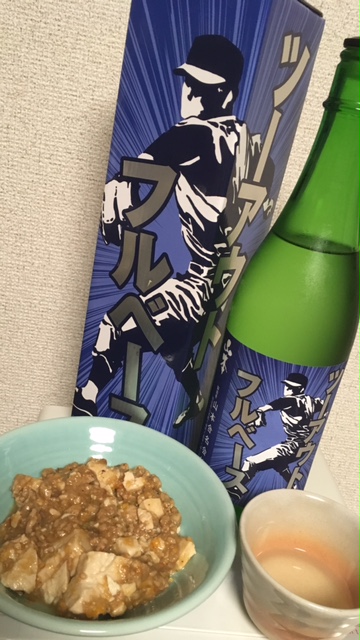
Good evening!
I’m a writer “R”!
Today’s report is about an interesting mariage of Nihonshu and Chinese food.
Contents
Must-try sake for baseball lovers! Nihonshu called “Junmai Ginjo Two Out Full Base”
I found two sake whose labels had big impacts on the other day.
I found them on an information board of a liquor shop which I often visit with my family.
That is the sake of today’s report.
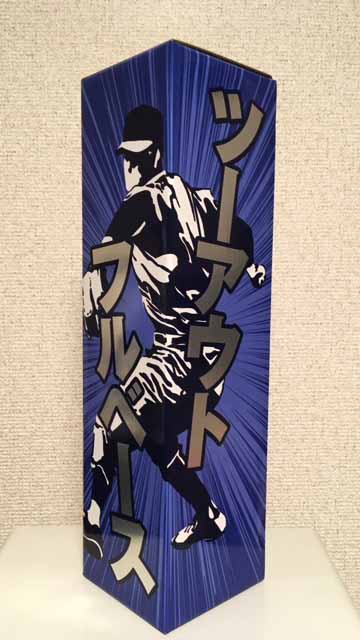
The names are “Junmai Ginjo Two Out Full Base” and “Junmai Daiginjo Gyakuten Sayonara Manrui Home Run”.
(They mean “Two outs, bases are full” and “Grand slam game-winning home run”.)
I only bought “Junmai Ginjo” one, so I only have a photo of that one.
“Two out full base” (two outs, bases are full) had a blue-based label and box maybe because the situation is tense, and “Sayonara Home Run” (game-winning home run) was red-based because it’s a happy situation.
Each box has stories about baseball and a scoreboard printed on it.
You write names on the scoreboard and do games or something.
Of course, the design of the scoreboard is different on “red” and “blue”.
I had a play with this scoreboard writing the names of my husband and daughter after I took this photo^^
These unique labels and boxes are the idea of Mr. Yamada, the president of the brewery “Yamamoto Gomei Gaishia” which is famous for some Sake such as “Shirataki” and “Yamamoto”.
This idea rushed upon his mind when he was driving a car.
In the hometown of this sake (Happo-cho, Akita Prefecture), many people of all ages love baseball, and Mr. Yamamoto’s children played baseball.
Such situation made him think that it would be fun if there was a “baseball” sake at parties after playing or watching baseball games.
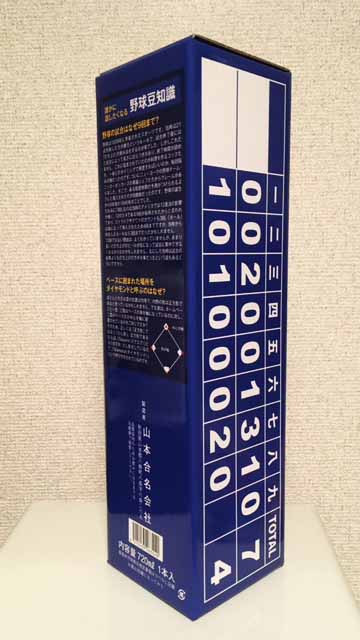
The water used in the rice fields for the ingredient and the brewing water are from the same water source.
The rice is grown organically, and the brewer itself polishes the rice to make the rice in the best condition for sake making.
They play The Beatles in the brewing room.
Isn’t it wonderful that the sake is sleeping in The Beatles!
The recipe of Mabo Dofu
The food I enjoyed with the sake was “Mabo Dofu” made with the special recipe by my husband’s mother!
The recipe is a proper way, and I don’t need to buy precooked “Mabo” sauce since I learnt this recipe.
The chef of that day was my husband, and he cooked it much better than me!
Ingredients of Special Mabo Dofu (2-3 serves)
Minced pork: 180g
Tofu (both Kinu and Momen are usable): 1 Cho
Leek: 1/3
★ Garlic: 1-2 cm from the tube of garlic paste, or mince a half of a small block
★ Ginger: a block
★ Tobanjan (Chinese seasoning): 1 and a half tablespoons
★ Tenmenjan (Chinese seasoning): 2 and a half tablespoons
★ Shisen Sansho (Chinese spice): a little (I used “Hana Sansho” this time)
☆ Soy sauce: 1 tablespoon
☆ Cooking sake: 1 tablespoon
Starch and water: 3 tablespoons
Vegetable oil: 1 tablespoon
Sesame oil: a little (for topping)
How to make the special Mabo Dofu
The seasonings and spices used might be not so familiar in many families, so I show you the photos of the products which I used for your information.
The powder on the paper is Hana Sansho.
This is the fine powder of Sansho nut (Japanese pepper).
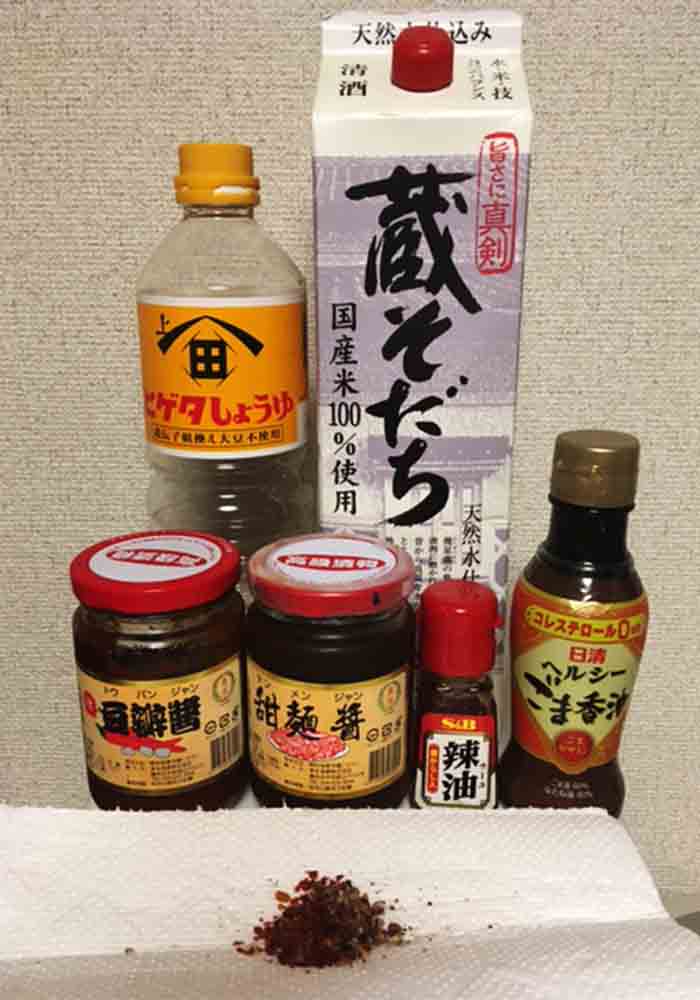
1. Cut garlic, ginger, and leek in fine pieces.
2. Boil water in a small pan. Add tofu cut in squares of 1.5cm in the boiling water and a pinch of salt, and take the tofu pieces out just before the water starts to boil again.
Instead of using boiling water, you can microwave tofu wrapped in kitchen paper on a heat resistant plate for 30 seconds to 1 minute.
3. Cook the minced meat with vegetable oil on another Chinese pan.
Stir the meat after it start to make sounds.
Cook the meat well to remove the bad smell of the meat.
The green part of a leek can work to remove the smell better if you cook it with the meat.
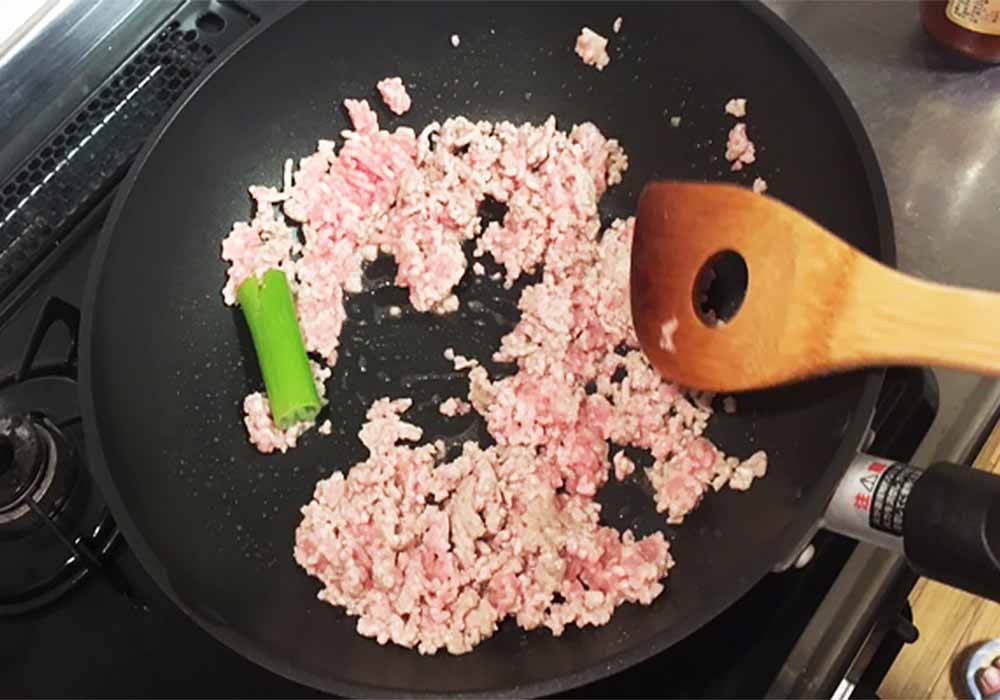
4. After the meat is cooked, stop the fire.
Add garlic, ginger, Tobanjan, Tenmenjan, and Sansho beside the meat.
Light the fire again and cook the ingredients until the oil becomes clear.
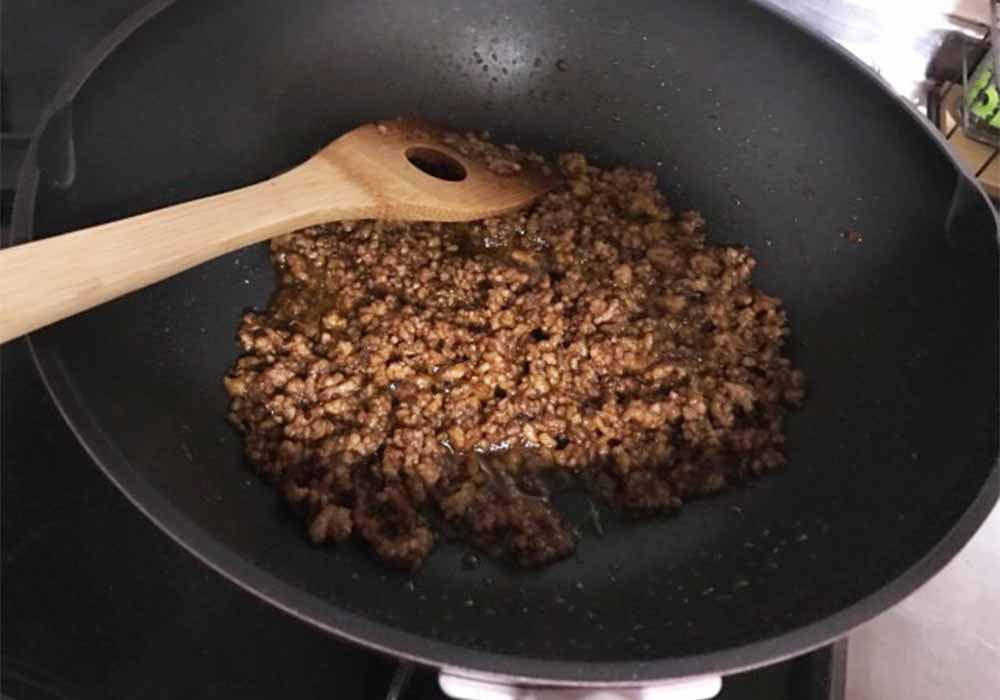
5. Make stock soup of 300 – 350 ml with Chicken stock paste.
Pour the soup into the pan from the side (not directly on the ingredients).
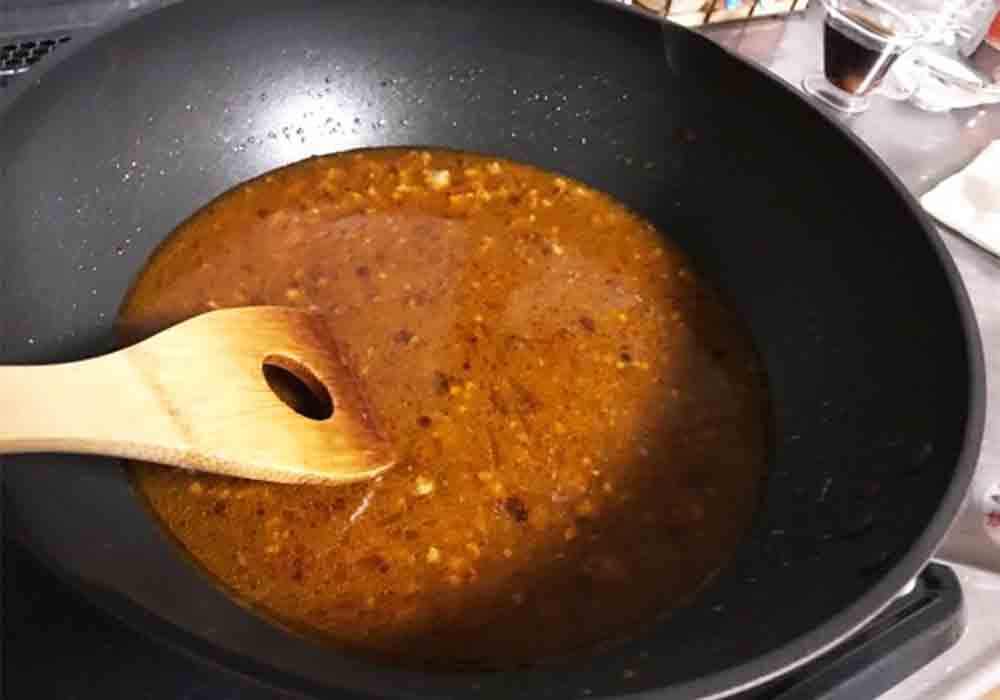
6. Add tofu into the Chinese pan, and then add ☆ ingredients.
Cook the ingredients for 8 – 10 minutes.
Mix the ingredients sometimes not to break the tofu pieces.
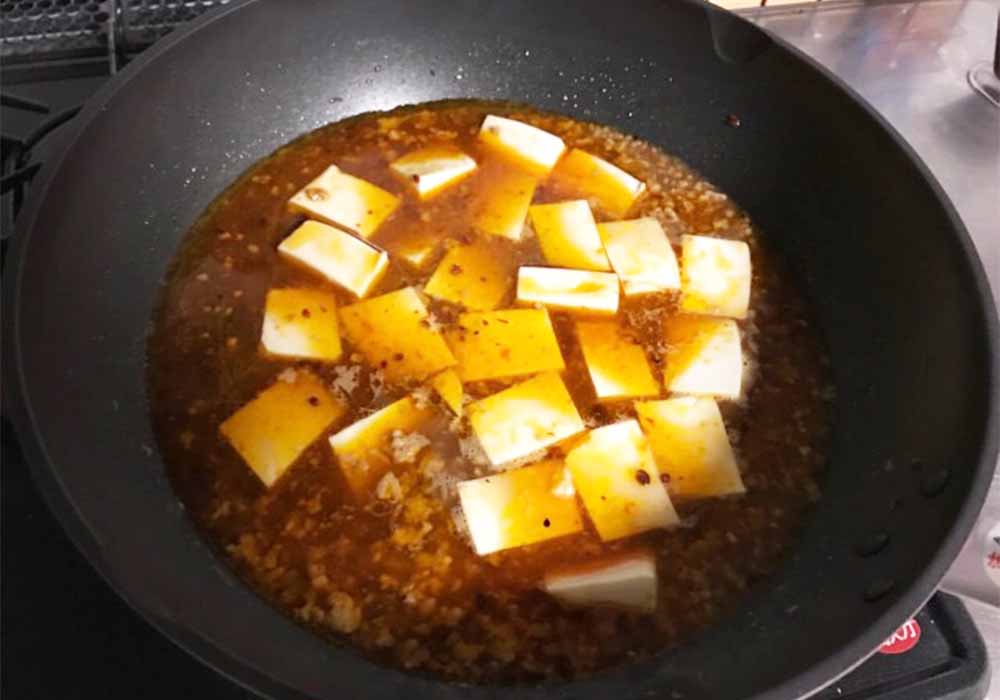
7. Add chopped leek and starch water.
Add sesame oil from the surface of the pan at last (be careful not to break the tofu when you stir).
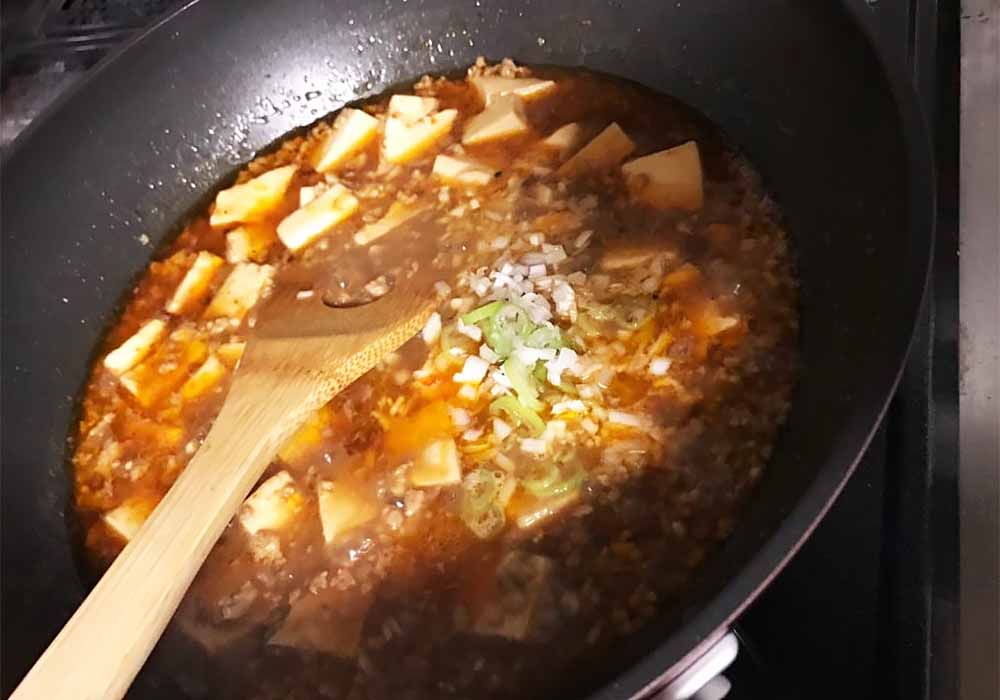
Done!

“Two Out Full Base” and “Special Mabo Dofu”
Let’s start the dinner!
First I tasted “Junmai Ginjo Two Out Full Base”.
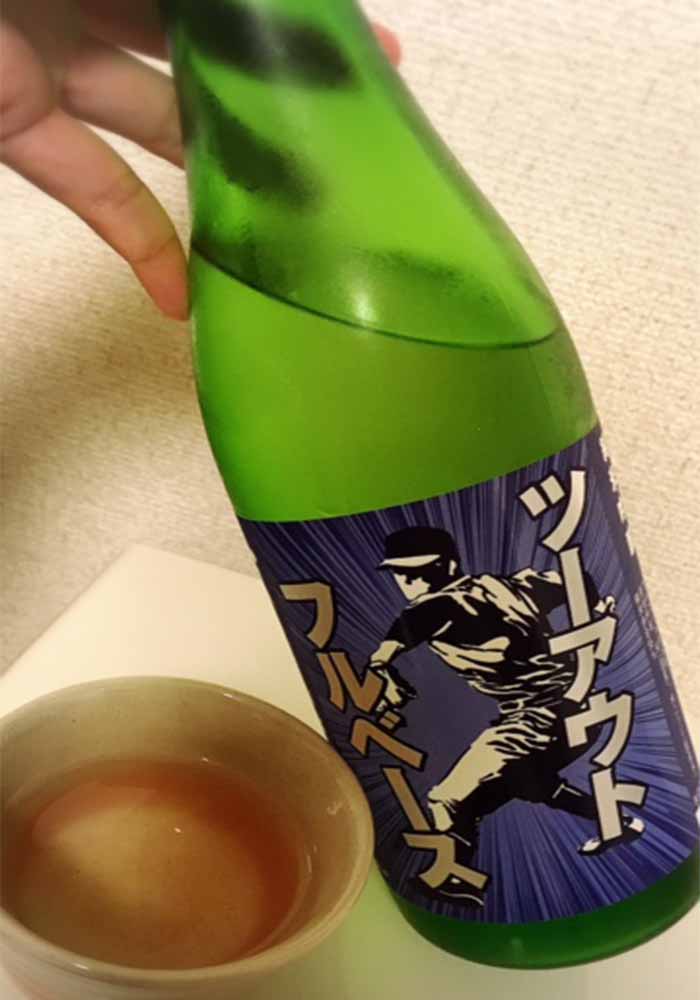
The sake itself had soft fragrance and sweetness at the first sip.
It was very fresh fruity sweetness like green apple, and sake’s dry and sharp taste came after the sweetness.
I noticed after I studied this sake more later that the sharp impression which I felt was from the gas which was made while the sake was distilled, bottled, and heated in a short time.
I tried Mabo Dofu next.

Surprisingly, I felt rich sweetness at first. I think that it was from Tenmenjan.
After that, I felt the spicy flavor of Hana Sansho going up my nose, and then hot Tobanjan taste.
Do you notice something from my description?
It was the biggest surprise for the day!
The change of the flavor in my mouth was similar in the Nihonshu and Mabo Dofu!
Sweetness → Freshness → Sharp and Spicy
I was glad to know the similarity!
I believe that the Japanese Nihonshu and Chinese Mabo Dofu matched well thanks to the similar point.
I didn’t expect that there was this kind of mariage.
Indeed, the combination of the sake and the food was as if they were drawing close to each other. The sweetness of the sake made the flavor of Mabo Dofu richer, and the spicy taste of Hana Sansho made my nose awaken and Nihonshu went through it after.
I used dry Hana Sansho powder this time. The dry powder usually has unique fragrance, but the Nihonshu made it less and left only the good parts of Hana sansho.
For hot tastes, Nihonshu added richer flavor to Tobanjan’s sharp spicy taste.
In general, the sake made the good parts of Mabo Dofu even better.
At first, I hesitated to use the seasonings of the instructed amounts (especially Tenmenjan and Tobanjan), but please try it first.
There are convenient Chinese seasonings such as paste tubes now. They are useful when you make ordinary dishes such as fried vegetables as well!
It's our great pleasure if this article is helpful for you.
Restaurant Information
| Shop Name | |
|---|---|
| Prefectures | - |
| Tel | |
| Address | |
| Nearest Station | |
| Homepage | - |
| Business Hours | - |
| Holiday | |
| Introduction | |
| Sake List |
|

